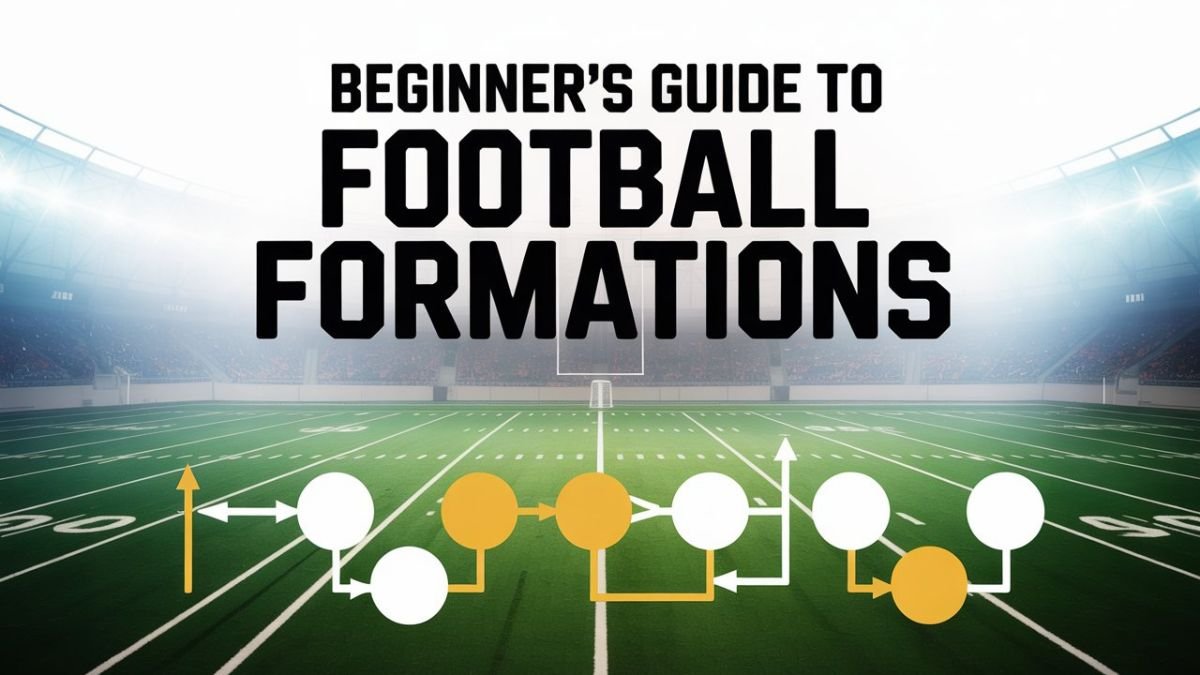Football formations shape how teams behave with and without the ball. A clear structure supports attacking creativity, defensive organization and transition speed.
The right formation helps players understand their roles and coordinate movement across the pitch. Modern clubs use flexible shapes that adjust based on possession, pressure and space.
Many systems mirror patterns seen in modern Italian tactical systems, creating a style that blends discipline and creativity. For beginners, learning formations makes matches easier to read and far more enjoyable.
The Most Common Football Formations
Formations offer structure and guide how players occupy space. Each system has strengths and limitations that influence how the team attacks, defends and transitions. Understanding the basics helps fans appreciate why coaches choose certain shapes and how teams adapt them during the match.
The 4-3-3 Explained
The 4-3-3 focuses on width, fast transitions and midfield balance. Wingers stretch the opposition, midfielders rotate to create passing angles and full-backs provide overlapping runs.
Teams using this shape often rely on quick combinations to break lines. This formation suits sides with pace, technical midfielders and aggressive pressing style.
The 4-2-3-1 Explained
This system offers structure through two defensive midfielders that protect the back line. The attacking midfielder sits between midfield and forward lines, linking play creatively. Wide players cut inside or provide width depending on team strategy.
This shape supports possession-based football because it gives strong central presence and enough width to maintain rhythm.
The 3-5-2 Explained
The 3-5-2 uses three central defenders and wing-backs to control width. Midfielders overload central areas while two forwards combine to create chances.
This formation suits clubs with strong defenders and wing-backs capable of running the entire flank. Many Italian sides favor this shape because it provides excellent balance, especially in the 3-5-2 system in Italian football.
Quick Comparison of Common Formations
| Formation | Strengths | Weaknesses | Best For |
|---|---|---|---|
| 4-3-3 | Width, pressing, flexible attack | High defensive workload for wings | Fast transitions and modern play |
| 4-2-3-1 | Strong midfield control, creative link play | Requires disciplined double pivot | Possession-based systems |
| 3-5-2 | Central overload, wing-back dominance | Vulnerable to wide counters | Structured, tactical setups |
| 4-4-2 | Simplicity and pressing shape | Limited midfield creativity | Direct play and quick counters |
How Formations Shape Attacking Play
Attacking patterns come directly from the formation a team chooses. A 4-3-3 encourages width and diagonal combinations, while a 4-2-3-1 creates pockets for the playmaker to operate between lines.
Teams using a back three often rely on wing-backs to advance and stretch the field, giving midfielders time to create. These attacking structures form the backbone of modern football, guiding movements that produce high-quality chances.
Teams with strong wingers often prefer wide formations because they allow one-on-one duels. Meanwhile, clubs with creative midfielders choose systems that support central overloads. These decisions shape how a side controls tempo and penetration.
How Formations Shape Defensive Structure
Defensive organization defines how a team withstands pressure. A four-man backline offers stability, while a three-man backline relies on midfield support. Many teams defend in compact blocks to limit space between lines. Coaches often adjust defensive shape depending on the opponent’s strengths and rhythm.
A 4-4-2 block remains one of the most recognizable defensive shapes because it reduces central options and pushes opponents wide. Meanwhile, a 3-5-2 defends with a back five in deeper phases, protecting the penalty area effectively. These choices reflect tactical identity and player qualities.
How Formations Defend
| Formation | Defensive Shape | Strengths | Challenges |
|---|---|---|---|
| 4-3-3 | 4-5-1 block | Limits central space | Requires winger discipline |
| 4-2-3-1 | 4-4-2 block | Balanced structure | Vulnerable to wide overloads |
| 3-5-2 | 5-3-2 block | Strong penalty area protection | Opponents may dominate midfield width |
| 4-4-2 | 4-4-2 block | Clear and simple | Less flexible against creative teams |
Formation Influence on Transitions
Transition moments reveal how well a formation supports movement. A 4-3-3 enables fast counters because wide forwards stay high and ready to run. A 3-5-2 offers strong central options for quick forward passes. Meanwhile, a 4-2-3-1 helps teams recover shape quickly because the double pivot blocks central lanes. These qualities create patterns that influence tempo and decision-making.
Coaches emphasize transition drills because winning second balls often shifts momentum. Strong transitions can turn defensive moments into scoring opportunities within seconds. Fans notice these patterns more easily once they understand the structure behind them.
How Coaches Choose the Right Formation
Coaches select formations based on player qualities, opponent analysis and long-term strategy. A team with fast wingers naturally fits a 4-3-3, while a club with strong midfielders may prefer a 4-2-3-1. Some managers choose flexible shapes that switch dynamically in possession, allowing players to express creativity.
Formation choices also depend on match context. In high-pressure fixtures, coaches may choose conservative shapes to prioritize stability. In must-win games, they may select attacking formations that create more goal-scoring chances. These decisions show how tactical identity evolves throughout the season.
Flexibility Within Modern Formations
Football formations rarely stay rigid. Many modern teams change shape depending on the match phase. A 4-3-3 in possession may become a 4-5-1 during defense. A 3-5-2 can shift into a 3-4-3 when wing-backs advance. These adjustments make football dynamic and harder to predict.
This flexibility demands intelligent players who understand positional play. Coaches spend significant time teaching how to move inside the formation. These details help teams control matches and react effectively to opponents.
How Formations Support Player Roles
Each position has specific responsibilities that support the formation’s identity. Full-backs in a 4-3-3 often overlap to create width. Defensive midfielders in a 4-2-3-1 control tempo and protect the backline. Wing-backs in a 3-5-2 combine defending with constant forward runs.
These roles influence how teams press, retain possession and create attacks. Understanding them helps fans appreciate individual contributions beyond goals and assists.
Key Player Roles by Formation
| Formation | Key Role | Contribution |
|---|---|---|
| 4-3-3 | Wingers | Provide width and press high |
| 4-2-3-1 | Playmaker (CAM) | Creates chances between lines |
| 3-5-2 | Wing-backs | Stretch field and deliver crosses |
| 4-4-2 | Strikers | Combine for direct play |
Why Beginners Should Learn Formations
Understanding formations makes football more enjoyable. It helps fans see patterns instead of isolated actions. When viewers notice how players move, switch positions and build play, they appreciate the game’s intelligence. Formations reveal the logic behind tactics and deepen understanding of match flow.
Learning formations also helps fans predict game changes. When a coach makes a substitution, viewers can anticipate shifts in pressing, defending or build-up play. This knowledge makes football far more engaging.
How Formations Influence Match Outcomes
Many matches turn based on how well teams execute their formation. Poor spacing leads to gaps, while strong coordination creates control. Coaches adjust shape throughout the match to exploit weaknesses or protect a lead. These tactical decisions directly influence momentum.
Formations provide structure but not rigidity. The best teams adapt within the framework, shifting shape intelligently without losing identity. This blend of structure and freedom creates football that feels both strategic and expressive.
Conclusion
This beginner’s guide to football formations shows how structure, movement and roles shape the game. Each formation creates unique patterns that influence attack, defense and transitions.
Understanding these systems helps fans enjoy football at a deeper level, revealing the strategy behind every pass and movement. With time, beginners will recognize how formations shape match stories and define team identity across seasons.










